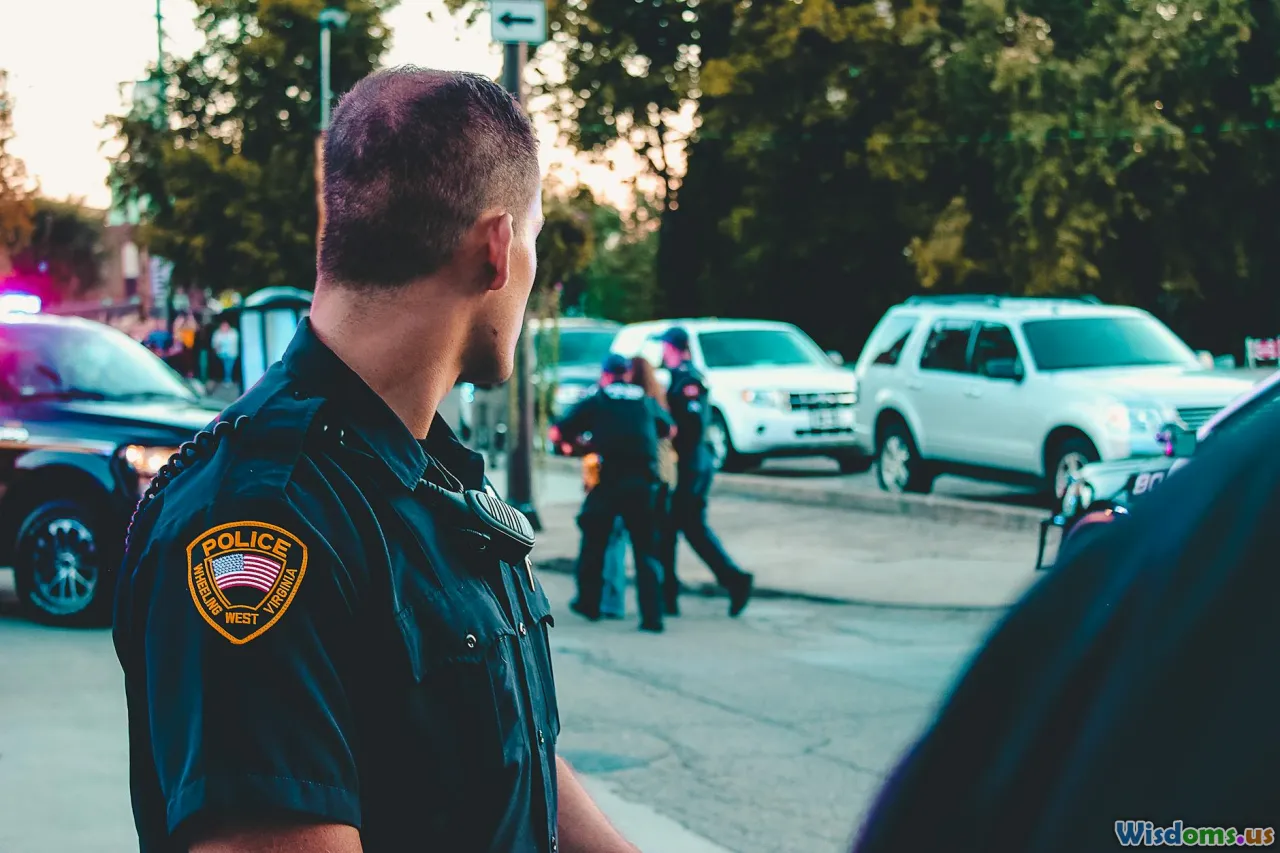
Are SelfDriving Cars Safer Than HumanDriven Vehicles
10 min read Explore if self-driving cars truly offer safer roads than human-driven vehicles through data, technology, and real-world examples. (0 Reviews)
Are Self-Driving Cars Safer Than Human-Driven Vehicles?
Introduction
Imagine a future where you sit back and relax while your car navigates through busy city streets, traffic jams, and unpredictable weather conditions all on its own. A world where accidents become rarer, and road safety improves dramatically. Autonomous, or self-driving, vehicles promise this vision. But the question remains: are self-driving cars truly safer than those controlled by human drivers?
This question has sparked intense debate among safety experts, technologists, policymakers, and the public alike. Human errors cause roughly 94% of car crashes, but can AI and automation unequivocally surpass human judgment and reflexes? In this article, we explore the fascinating comparison between self-driving cars and human-driven vehicles, dissecting available data, technological capabilities, limitations, and the broader impacts on road safety.
Understanding the Current Safety Landscape
The Scale of Human-Driven Vehicle Accidents
According to the National Highway Traffic Safety Administration (NHTSA), approximately 38,000 people died in motor vehicle crashes in the United States in 2021. Globally, the World Health Organization estimates over 1.3 million deaths each year on roadways. An overwhelming majority, about 94%, of these crashes involve some form of human error—ranging from distractions, impaired driving, speeding, fatigue, to misjudgment.
For example, distracted driving claimed 3,522 lives in the U.S. alone in 2020. Alcohol-impaired driving accounted for 28% of all traffic deaths the same year. These statistics highlight the critical role human behavior plays in road safety and suggest automation's potential influence by removing or drastically limiting these causal factors.
The Rise of Self-Driving Cars
Self-driving cars use sensors, cameras, radar, and powerful Artificial Intelligence (AI) to analyze surroundings, make decisions, and control the vehicle autonomously. Technological giants like Waymo, Tesla, Cruise, and Baidu have invested heavily in developing this technology.
While fully autonomous vehicles (Level 5) are not yet widespread, semi-autonomous and autonomous systems are increasingly common in features such as lane-keeping assist, adaptive cruise control, and emergency braking. These systems serve as stepping stones toward full autonomy.
Comparative Safety: Self-Driving vs. Human-Driven Cars
Accident Rates and Statistics
When comparing the safety records, available data shows promising trends but also significant caveats.
-
Waymo’s Autonomous Mileage: Waymo’s driverless cars have reportedly driven over 20 million miles on public roads with an accident rate reportedly 70% lower than average human-driven vehicles. However, some crashes involving Waymo cars involved human driver fault or minor collisions where the autonomous vehicle wasn’t to blame.
-
Tesla's Autopilot Data: Tesla publishes a quarterly safety report comparing accidents per million miles with and without Autopilot engaged. The latest Tesla data (as of Q1 2024) shows crashes when Autopilot is engaged occur about once every 7.3 million miles, compared to once every 3.2 million miles for vehicles without it.
-
California DMV Reports: According to the California Department of Motor Vehicles, autonomous vehicle disengagements (instances where a human driver takes control) highlighted that the technology still encounters unpredictable or complex situations that it cannot handle flawlessly yet.
While these statistics indicate a safer profile for autonomous systems, industry experts caution about the limitations of testing environments, reporting standards, and real-world scalability.
Human Error vs. Machine Error
Human drivers suffer from cognitive and physical limitations: distractions, fatigue, emotions, impaired judgment, and inconsistency. Machines eliminate distraction and fatigue, can react faster, and process far more data simultaneously.
Yet, autonomous systems face challenges in:
-
Unpredictable Scenarios: Complex urban environments, sudden pedestrian behaviors, and inclement weather can confuse sensors or produce ambiguous data.
-
Ethical Dilemmas: Programming a self-driving car to make decisions in dilemma situations (e.g., unavoidable crashes) remains unresolved.
-
System Failures: Software bugs, sensor obstructions, or hacking risks can compromise safety.
Therefore, while machines reduce traditional human error, they introduce new kinds of technical vulnerabilities.
Examples of Autonomous Vehicle Accidents
-
Uber Autonomous Car Fatality (2018): A self-driving Uber car struck and killed a pedestrian in Tempe, Arizona. Investigation revealed the system failed to adequately predict the pedestrian’s movement and ignored emergency braking protocols, highlighting gaps in perception and decision-making AI.
-
Tesla Autopilot Crashes: Multiple crashes have involved Teslas driving on Autopilot colliding with stationary emergency vehicles or crossing intersections, often attributed to system misinterpretation or driver overreliance.
These incidents remind manufacturers and regulators of the high stakes and continuous improvement necessary in the field.
Technological Advances Driving Safety
Machine Learning and Sensor Fusion
Modern autonomous vehicles utilize machine learning models trained on billions of miles driven either virtually or in reality. Sensor fusion combines inputs from LiDAR, radar, cameras, GPS, and inertial measurement units, creating a multilayered understanding of the environment.
This redundancy means the systems can cross-verify information, reducing blind spots and improving reaction times.
Over-the-Air Updates and Real-Time Data
Unlike human drivers, self-driving cars can receive software improvements and updates to patch vulnerabilities or enhance performance. Tesla, for example, frequently pushes updates adding new safety features remotely.
Moreover, connected vehicle networks enable cars to share information about road conditions, hazards, and traffic in real time, potentially reducing accidents through cooperative awareness.
Regulations and Testing Protocols
Governments worldwide are formulating stringent standards for autonomous vehicles:
-
The U.S. NHTSA and the National Transportation Safety Board (NTSB) oversee safety investigations and propose regulations.
-
The European Union has the General Safety Regulation requiring advanced driver-assistance systems in new cars.
Such frameworks aim to ensure vehicles meet reliability thresholds before widespread deployment.
Behavioral and Ethical Implications
Changing Driver Responsibility
The transition period where autonomous and human-driven vehicles share roads poses challenges regarding liability, insurance, and driver engagement.
Are drivers liable for a crash while in autonomous mode? How much should attendance behind the wheel be required? These questions remain partially unresolved.
Social Acceptance and Trust
A 2023 Pew Research Center study found that only 45% of Americans would trust a fully self-driving car to operate safely, reflecting public skepticism fueled by media coverage of accidents and the complexity of AI decision-making.
Addressing this trust gap is crucial for adoption and realizing safety benefits.
Conclusion: The Road Ahead
So, are self-driving cars safer than human-driven vehicles? Evidence indicates that autonomous vehicles possess the capability to dramatically reduce crashes caused by human error, which constitutes the vast majority of current incidents. Early reports from companies like Waymo and Tesla show lower accident rates during autonomous operation compared to human-driven miles.
However, this technology is still maturing, and challenges remain around system reliability, edge-case handling, regulatory standards, and public trust. It is also crucial to remember that data is still limited since millions of autonomous miles are dwarfed by billions of human-driven miles annually.
Ultimately, self-driving cars offer a promising pathway toward safer roads by minimizing human error and leveraging cutting-edge technologies. Continued rigorous testing, transparent reporting, careful regulation, and public education will be necessary to unlock their full safety potential.
As the transition continues, a collaborative approach involving engineers, policymakers, and society will ensure that autonomous vehicles help build a future with fewer accidents, injuries, and lives lost on the roads.
References:
- National Highway Traffic Safety Administration (NHTSA) 2021 Crash Data
- World Health Organization Global Status Report on Road Safety 2022
- Waymo Safety Report 2023
- Tesla Vehicle Safety Report Q1 2024
- Pew Research Center, Public Attitudes toward Autonomous Vehicles, 2023
- National Transportation Safety Board (NTSB) Investigations on AV Incidents
Rate the Post
User Reviews
Popular Posts
















